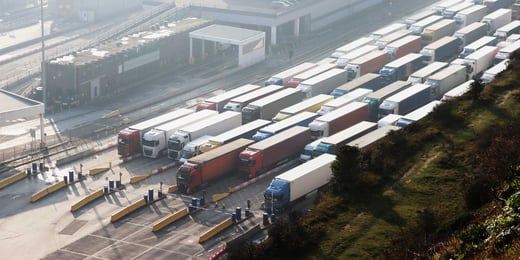Since its humble beginnings in 1994 as an online marketplace for books, Amazon has totally revolutionized the online shopping industry. Now it offers millions of products and provides a level of service that has changed customer expectations and the way customers shop.
As a result, the common effect that online retail has on brick-and-mortar stores has been branded the Amazon Effect.
But what exactly does this entail, and what does it mean for e-commerce businesses?
What is the "Amazon Effect"?
Named the Amazon Effect because Amazon is the largest e-commerce website globally, it refers to the impact of online, digital, or e-commerce marketplace on traditional brick-and-mortar stores.
Because it places emphasis on convenience and a wide selection of products at attractive prices, it hurts many traditional businesses who are now forced to compete with e-commerce businesses that have a global reach.
Now, apart from affecting the revenue of brick-and-mortar stores, it's also led to a change in shopping patterns that impacts traditional retailers:
- Because shoppers have so much convenience in online shopping, they now expect a lot more variety while visiting a physical retail store.
- The seamless shopping experience that customers have online has caused that they now expect the same seamless shopping experience with smoothness, timely response, and convenience from retail stores.
How does the Amazon Effect impact e-commerce businesses?
Besides the apparent fact that Amazon has such a significant inventory that customers can find almost any product they're looking for, it also has some other effects on e-commerce businesses.
These include:
Changing customer expectations
Amazon's delivery network is a logistics phenomenon. For example, customers can order virtually anything and have it shipped to their doorstep in a matter of days or even hours. Customers now expect the same from other online retailers. This means that e-commerce businesses have been under increasing pressure to match Amazon's speed and efficiency. As a result, e-commerce businesses need to implement the necessary measures like courier software to match Amazon's delivery performance.
Changing customer behavior
Customers now expect the same seamless experience from other online retailers. They also expect the same variety in products, shipping, and payment options when looking for online retailers.
Ease of ordering
Amazon has made it much easier for customers to place orders through devices like Amazon Echo, Amazon Alexa, and Amazon Dash Button. Although these devices can do so much more in order products, Amazon created them, especially to make the ordering process easier. Amazon also employs one-click ordering on their website to serve their web customers for customers who don't use any of these products.
Mobile-first
Although it has always been somewhat popular, 2019 saw a significant shift away from the desktop as the primary way to access the Internet, and an increasing number of users are turning to mobile apps and browsers to shop on their mobile. To compete, e-commerce businesses will need to make sure that their shops are mobile-optimized or that they use a mobile app that their customers can use to shop.
But the effect on e-commerce businesses goes further than just changing customer behavior or expectations. It also impacts the logistics industry. As such, the Amazon Effect also has a significant impact on the third-party logistics (3PL) industry.

Amazon as a disruptor in e-commerce logistics
The thing is, Amazon is a disruptor. But industries need disruptors, or, in other words, companies that challenge the traditional ways of working and force all their competitors to recalibrate.
For example, Amazon has:
- Purchased thousands of trailers in the United States and branded them with Amazon logos.
- Leased 20 US domestic cargo planes.
- Rapidly expanded its fulfillment and sortation centers, smaller Amazon Prime hubs, and Amazon Fresh grocery delivery stations across the United States.
- Registered a non-vessel-operating common carrier to better manage the flow of goods from China to the US.
- Expanded shipments to China using a free trade zone in Shanghai.
Likewise, in Europe, the Amazon European Operations network has expanded to include more than 40 fulfillment centers. Amazon customers in Europe can choose from millions of products stored in these fulfillment centers. These centers dispatch packages to tens of millions of customers across Europe and globally.
Amazon also continuously works to streamline its processes and eliminate defects, allowing it to achieve even faster delivery times and lower costs. This drives a better customer experience. One of the methods they use to make their processes easier and more efficient includes the "Kaizen" program, which in Japanese means "change for the better".
Through this program, Amazon Associates work in small teams and can better identify areas for improvement. This, ultimately, enables them to influence their working environment and streamline their processes.
All this means that it's no time for e-commerce businesses to slack off. It's a very competitive landscape. As such, they'll need their service and delivery to be on point to be successful.
Your very own "Kaizen" approach
As a result, businesses need their own Kaizen approach to improve their e-commerce logistics processes. To do this, they'll need to do the following:
- They'll need to have a systemic approach to improve, much like that of Amazon. In other words, they'll need to streamline their processes to be as efficient as possible.
- They also need to eliminate all things that can cause friction in their processes and cause them to slow down. This could be anything from getting rid of redundant systems, finding new and improved ways to work, or ending relationships with inefficient partners.
- To increase their reach, they should consider using other platforms for their selling. For instance, they can consider selling through third-party platforms, which will enable them to sell to more customers. They should, however, keep in mind that the necessary integrations should be in place with their own platform and invented not to make selling through other third-party sellers overly complex.

3PL partner as competitive advantage?
A simple solution to weather the Amazon Effect storm is to work with a 3PL partner that makes it easy for e-commerce businesses to outsource some or all of their logistics and warehousing.
When you do this, you outsource the responsibility of inventory management, product ordered lists, and order fulfillment to a 3PL provider. The result is faster shipping and better logistics management, which frees up your time to focus on what you do best - running the business.
When you use a 3PL partner, you'll overcome the following challenges:
- You'll be more cost-efficient because you won't have to deal with minimum shipping volumes that are often a hurdle when negotiating terms for shipment contacts.
- You'll avoid significant investments because you don't have to invest in own warehouse.
- You'll provide your customers with more delivery options.
- Your operations will always be secure because you don't have to hire a seasonal workforce during times of higher demand.
- You'll save time by not having to worry about picking, packing, and shipping.
Ultimately, a 3PL partner can be an e-commerce business's own Kaizen program that will give you the competitive advantage in a crowded marketplace.
If you want to know more about 3PL or the services we offer, contact us for more detail.
OGOship is a 3PL company specializing in e-commerce. Our mission is to make sure e-commerce businesses can ship their goods fast and cost-effectively worldwide.
Tags:
3PL

Comments